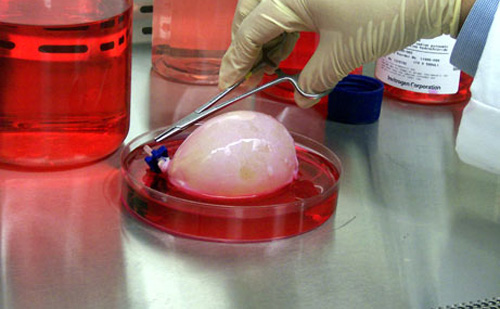What are Synthetic Organs? The concept of growing an organ from scratch may seem impossible, but scientists are getting closer to making this idea a reality. A synthetic organ is an artificial organ created, or manufactured, by humans. The goal is that they will act in the same way as a natural organ so that they can be transplanted into those in need of an organ. These organs are composed of large synthetic tissues that are very similar to the make-up of real organs and function in the same way (3). Another general goal of scientists in this field is involved with creating synthetic organs is to create a variety. For example, the picture on the right depicts an artificial heart valve. As the technology for creating synthetic organs improves, other organs besides hearts, such as kidneys and bone tissue, may be possible (4). Already, the first successful transplanted synthetic organ was created through the method of stem cells. This organ, a synthetic bladder, was grown by Anthony Atala and his colleagues at the Wake Forest University School of Medicine, starting in 1999. The stem cells were extracted from seven patients with spina bifada and malfunctioning bladders, who each received a synthetic bladder (5). As the use of stem cells grows in popularity, there may be a chance that these sorts of transplants will be available much more regularly.
| Why are They Necessary? The new technology of creating synthetic organs may sound intriguing, but some may wonder why it is even necessary, as organs can be obtained through organ donations. However, this is rarely a quick, simple process. In fact, the lack of donated organs is so severe that one person dies every ninety minutes from waiting for a replacement organ (2). The use of synthetic organs will guarantee life to those who would otherwise have no hope.
As of March 22, 2010.. (6) Want to help improve these statistics? Visit OrganDonor.gov to find out how to donate and make a difference! |
Skin Grafting
Currently, synthetic skin, used in skin grafts to treat burn victims, is the only FDA approved synthetic organ. If burn victims lose more than fifty percent of their skin, their risk for not surviving is very high, as the dermis usually does not regenerate (12). However, with the use of various biomedical products, the chance of death significantly decreases. |
|


